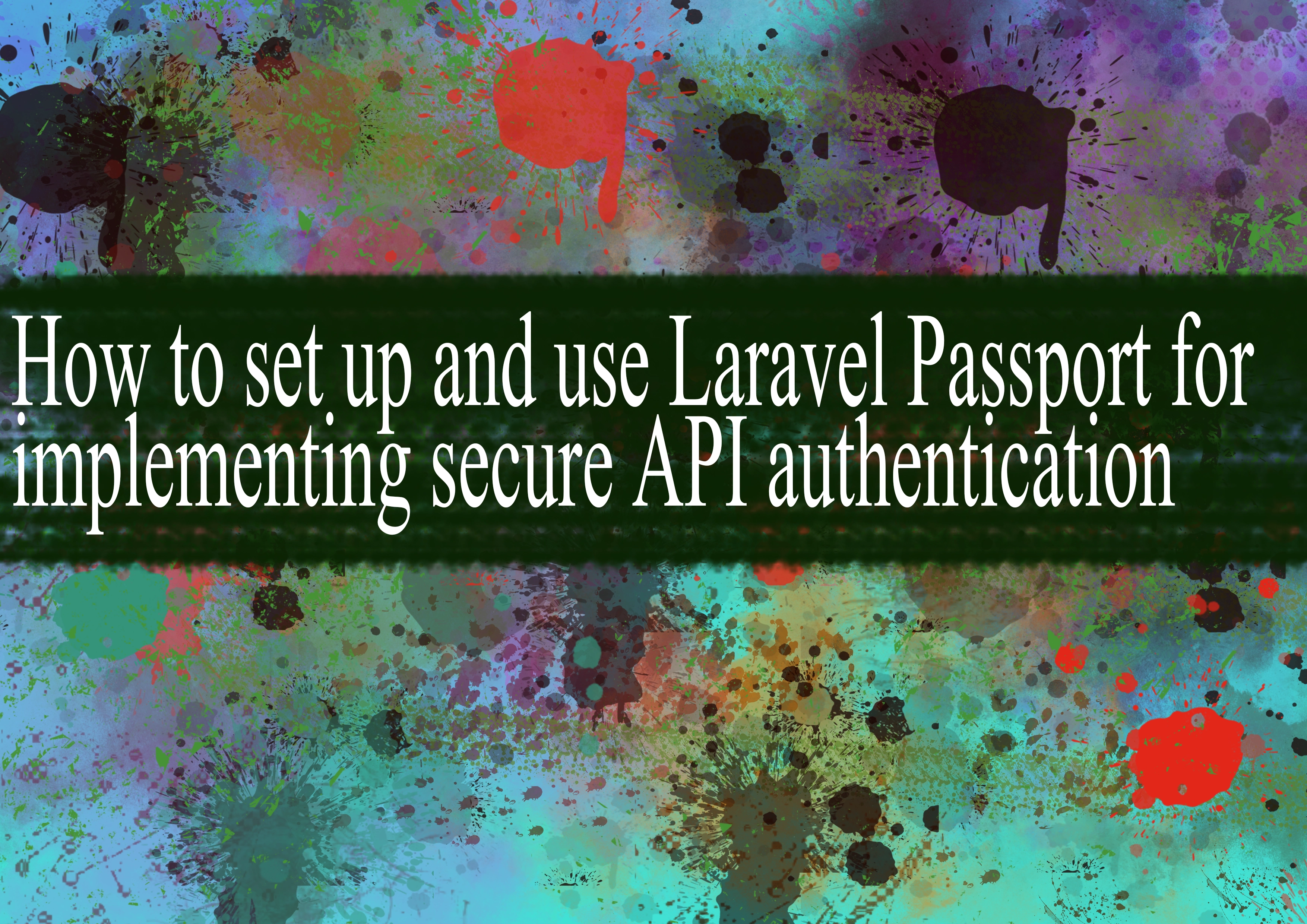How to set up and use Laravel Passport for implementing secure API authentication

Laravel Passport is a full OAuth2 server implementation for Laravel. It allows you to easily set up and use OAuth2 for secure API authentication. Here's a step-by-step guide on how to set up Laravel Passport with an example:
Step 1: Install Laravel Passport
Run the following command to install Passport via Composer:
bashcomposer require laravel/passport
Step 2: Run Migrations
Run the migrations to create the necessary tables for Passport:
bashphp artisan migrate
Step 3: Install Passport
Install Passport using the following Artisan command:
bashphp artisan passport:install
This command creates the encryption keys needed to generate secure access tokens.
Step 4: Configure Passport
In your AuthServiceProvider located at app/Providers/AuthServiceProvider.php, make sure to call Passport::routes() within the boot method:
phpuse Laravel\Passport\Passport;
public function boot()
{
$this->registerPolicies();
Passport::routes();
}
Step 5: Set up your User model
In your User model, use the Laravel\Passport\HasApiTokens trait:
phpuse Laravel\Passport\HasApiTokens;
class User extends Authenticatable
{
use HasApiTokens, Notifiable;
// ...
}
Step 6: Update Auth Configuration
In your config/auth.php file, make sure the api guard uses the passport driver:
php'guards' => [
'web' => [
'driver' => 'session',
'provider' => 'users',
],
'api' => [
'driver' => 'passport',
'provider' => 'users',
],
],
Step 7: Create a Passport Client
Run the following command to create a client:
bashphp artisan passport:client
This command will prompt you to choose the type of client (e.g., "Password grant client"). You can choose according to your needs.
Step 8: API Routes
Protect your API routes using the auth:api middleware. For example:
phpRoute::middleware('auth:api')->get('/user', function (Request $request) {
return $request->user();
});
Step 9: Requesting Tokens
You can use tools like Postman or cURL to request access tokens. For password grant, you'll need to send a POST request to /oauth/token with the client credentials and user credentials.
Additional Links:
- 1. Laravel Passport Documentation: https://laravel.com/docs/passport
- 2. Laravel API Authentication with Passport: https://laravel.com/docs/authentication
- 3. Laravel Passport on GitHub: https://github.com/laravel/passport
These resources will provide more in-depth information on using Laravel Passport and handling various authentication scenarios.
=== Happy Coding :)
-
Popular Post
- How to optimize for Google's About This Result feature for local businesses
- How to implement multi-language support in an Express.js application
- How to handle and optimize for changes in mobile search behavior
- How to handle CORS in a Node.js application
- How to use Vue.js with a UI framework (e.g., Vuetify, Element UI)
- How to configure Laravel Telescope for monitoring and profiling API requests
- How to create a command-line tool using the Commander.js library in Node.js
- How to implement code splitting in a React.js application
- How to use the AWS SDK for Node.js to interact with various AWS services
- How to use the Node.js Stream API for efficient data processing
- How to implement a cookie parser middleware in Node.js
- How to implement WebSockets for real-time communication in React
-
Latest Post
- How to implement a dynamic form with dynamic field styling based on user input in Next.js
- How to create a custom hook for handling user interactions with the browser's device motion in Next.js
- How to create a custom hook for handling user interactions with the browser's battery status in Next.js
- How to implement a dynamic form with dynamic field visibility based on user input in Next.js
- How to implement a dynamic form with real-time collaboration features in Next.js
- How to create a custom hook for handling user interactions with the browser's media devices in Next.js
- How to use the useSWRInfinite hook for paginating data with a custom loading indicator in Next.js
- How to create a custom hook for handling user interactions with the browser's network status in Next.js
- How to create a custom hook for handling user interactions with the browser's location in Next.js
- How to implement a dynamic form with multi-language support in Next.js
- How to create a custom hook for handling user interactions with the browser's ambient light sensor in Next.js
- How to use the useHover hook for creating interactive image zoom effects in Next.js